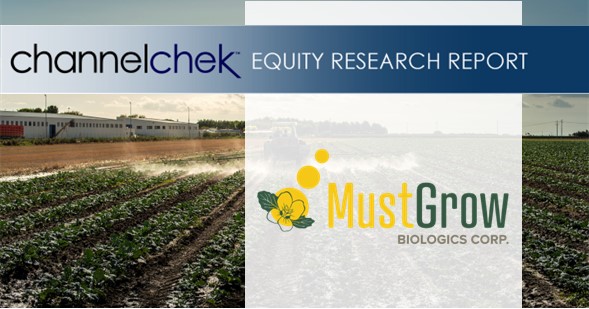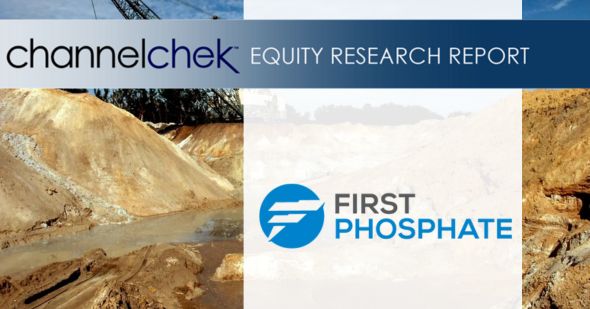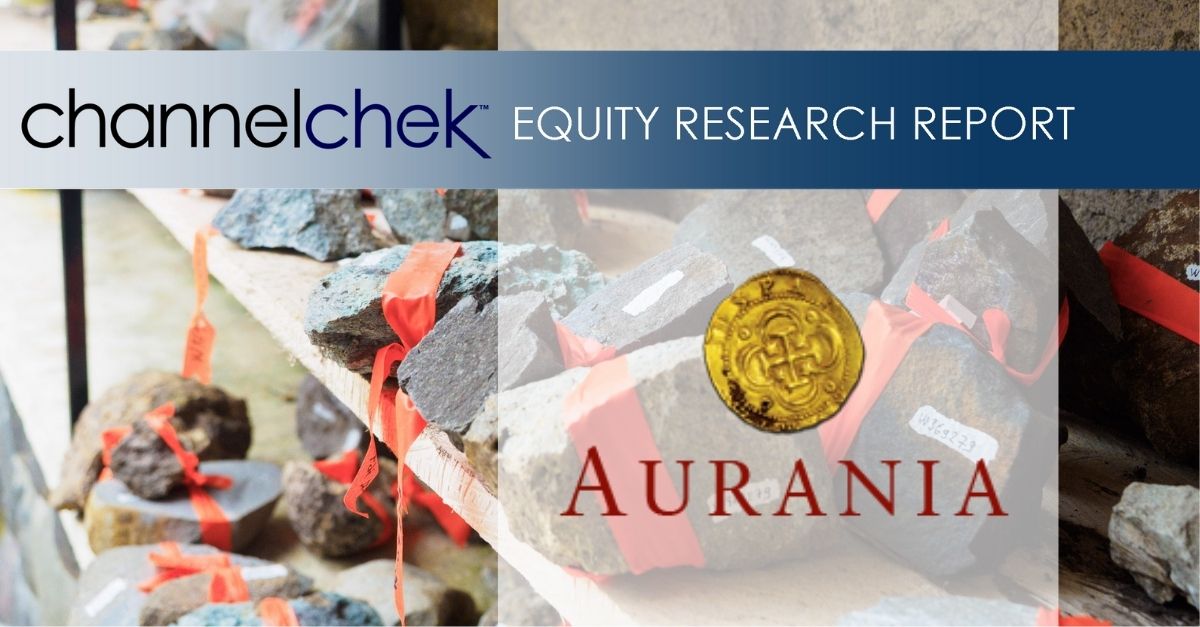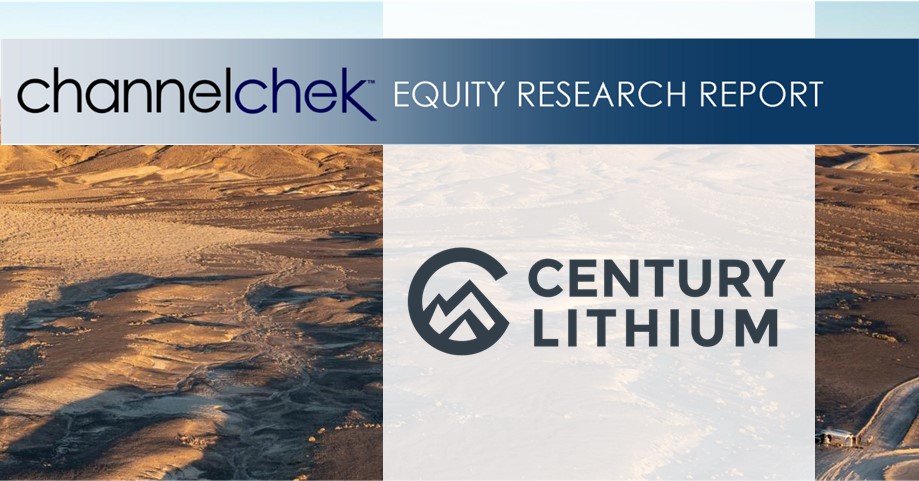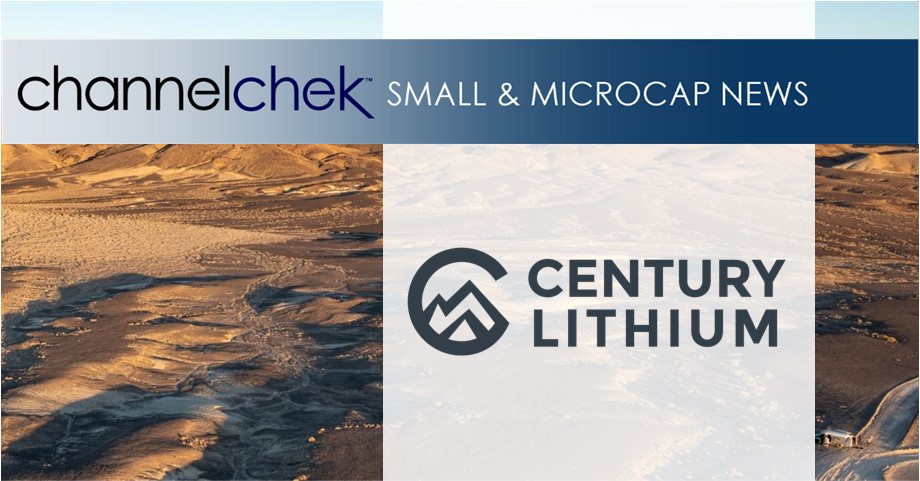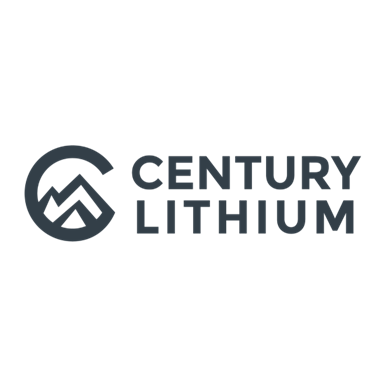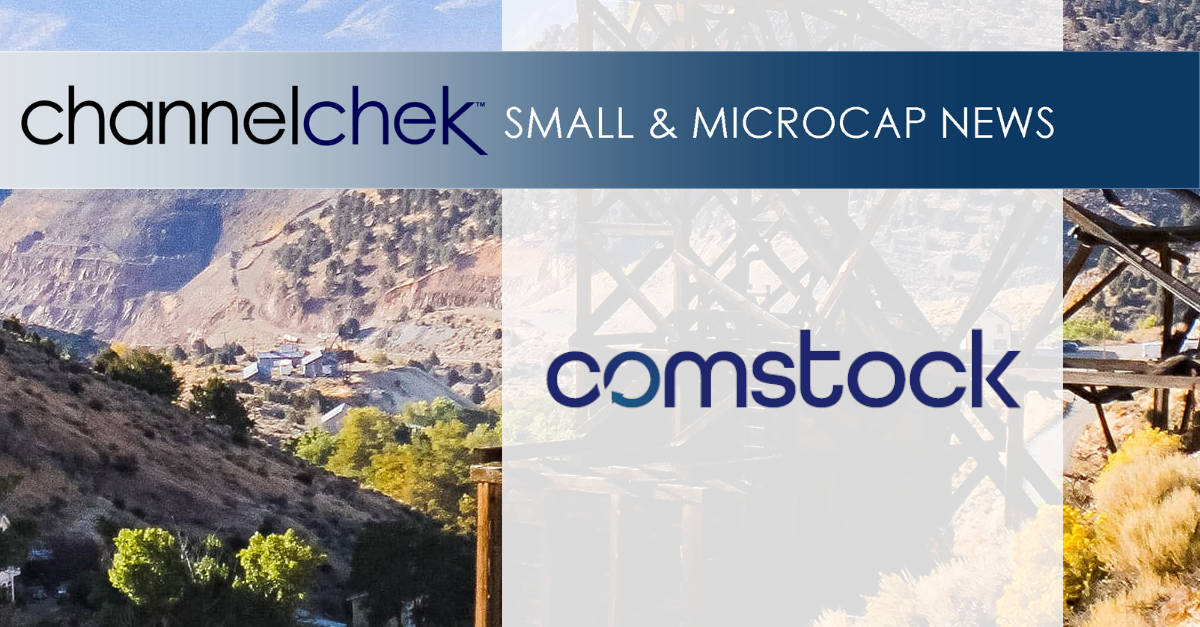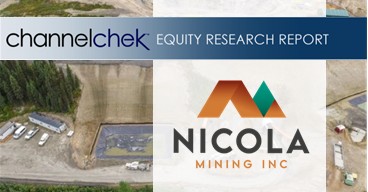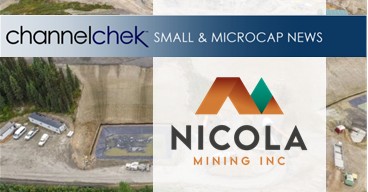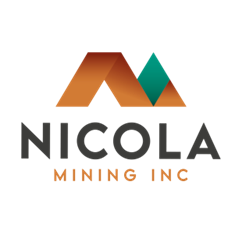Research News and Market Data on LODE
VIRGINIA CITY, Nev., November 05, 2025 (GLOBE NEWSWIRE) — Comstock Inc. (NYSE: LODE) (“Comstock” and the “Company”) and Comstock Metals LLC (“Comstock Metals”), a leader in the responsible recycling of end-of-life solar panels with the only certified, north American, zero-landfill solution, announced today that it has received its notification of eligibility for a Written Determination Permit from the Nevada Division of Environmental Protection – Bureau of Sustainable Materials Management (NDEP-BSMM), subject to certain normal compliance conditions and public notice periods, for the processing of waste solar panels and photovoltaics for its industry-scale materials recovery facility located in Silver Springs, NV. This timely approval keeps our scale up plans for commissioning our first industry-scale facility in Silver Springs, NV, right on schedule.
Comstock Metals expects the receipt of a similar notification of approval for the Air Quality control permit in the next few weeks, also with the normal conditions and public notice period. These permits, once final, represent the complete scope of required regulatory approvals for commissioning the scale up of a facility designed for processing over 3 million panels per year from one, continuous production line, representing up to 100,000 tons per year of waste materials being processed. This facility integrates technologies for efficiently crushing, conditioning, extracting, and recycling metal concentrates from photovoltaics. The Company previously ordered all of the equipment and expects deliveries by year end, so that it can commence installation, testing, and commissioning of the industry-scale facility during the first quarter of 2026.
“We appreciate BSMM’s collaborative efforts in issuing this first solar panel recycling Written Determination permit and enabling the only Nevada-based, zero-landfill, end-of-life solar panel solution serving this broad region and keeping these critical materials out of our landfills,” said Dr. Fortunato Villamagna, President of Comstock Metals. “Our original expectations for the receipt of these permits were for the end of October, so these notifications keep us right on schedule. This is a true testament to the strong working relationship we have with our regulators and the successful efforts of a complex process.”
Most of the U.S. solar panels have been deployed in the southwestern U.S., primarily California, Arizona, and Nevada, with decommissioning of these solar panels occurring now, accelerating supply and increasing the demand for environmentally responsible end-of-life solutions. Comstock has positioned itself to ensure the safe deconstruction and productive reuse of these important materials. Establishing our platform in Nevada establishes the leading solar recycling position over more than half the U.S. market for end-of-life panels and establishes a platform for rapid expansion across the rest of the United States.
“We are receiving waste panels continuously into our facility and very much look forward to commencing our commissioning activities. We are receiving more and more customer inquiries as waste panels are becoming rapidly available from many different sources, directly enabling and supporting our ramp up efforts” stated Dr. Villamagna.
“We have quickly established a leadership position in this readily available, and rapidly growing photovoltaic market,” stated Corrado De Gasperis, Comstock’s Executive Chairman and CEO. “Our metals team is already assessing additional sites for our industry scale solution and an expanded storage capability, as we look to capitalize and expand our lead in this rapidly growing end-of-life solar dilemma. Comstock Metals is the leading zero-landfill, end-of-life solution for these wasted solar panels.”
About Comstock Inc.
Comstock Inc. (NYSE: LODE) innovates and commercializes technologies, systems and supply chains that enable, support and sustain clean energy systems by efficiently, effectively, and expediently extracting and converting under-utilized natural resources into reusable metals, like silver, aluminum, gold, and other critical minerals, primarily from end-of-life photovoltaics. To learn more, please visit www.comstock.inc.
Comstock Social Media Policy
Comstock Inc. has used, and intends to continue using, its investor relations link and main website at www.comstock.inc in addition to its X.com, LinkedIn and YouTube accounts, as means of disclosing material non-public information and for complying with its disclosure obligations under Regulation FD.
Contacts
For investor inquiries:
Judd B. Merrill, Chief Financial Officer
Tel (775) 413-6222
ir@comstockinc.com
For media inquiries:
Zach Spencer, Director of External Relations
Tel (775) 847-7573
media@comstockinc.com
Forward-Looking Statements
This press release and any related calls or discussions may include forward-looking statements within the meaning of Section 27A of the Securities Act of 1933, as amended, and Section 21E of the Securities Exchange Act of 1934, as amended. All statements, other than statements of historical facts, are forward-looking statements. The words “believe,” “expect,” “anticipate,” “estimate,” “project,” “plan,” “should,” “intend,” “may,” “will,” “would,” “potential” and similar expressions identify forward-looking statements but are not the exclusive means of doing so. Forward-looking statements include statements about matters such as: future market conditions; future explorations or acquisitions; divestitures, spin-offs or similar distribution transactions, future changes in our research, development and exploration activities; future financial, natural, and social gains; future prices and sales of, and demand for, our products and services; land entitlements and uses; permits; production capacity and operations; operating and overhead costs; future capital expenditures and their impact on us; operational and management changes (including changes in the Board of Directors); changes in business strategies, planning and tactics; future employment and contributions of personnel, including consultants; future land and asset sales; investments, acquisitions, divestitures, spin-offs or similar distribution transactions, joint ventures, strategic alliances, business combinations, operational, tax, financial and restructuring initiatives, including the nature, timing and accounting for restructuring charges, derivative assets and liabilities and the impact thereof; contingencies; litigation, administrative or arbitration proceedings; environmental compliance and changes in the regulatory environment; offerings, limitations on sales or offering of equity or debt securities, including asset sales and associated costs; business opportunities, growth rates, future working capital, needs, revenues, variable costs, throughput rates, operating expenses, debt levels, cash flows, margins, taxes and earnings. These statements are based on assumptions and assessments made by our management in light of their experience and their perception of historical and current trends, current conditions, possible future developments and other factors they believe to be appropriate. Forward-looking statements are not guarantees, representations or warranties and are subject to risks and uncertainties, many of which are unforeseeable and beyond our control and could cause actual results, developments, and business decisions to differ materially from those contemplated by such forward-looking statements. Some of those risks and uncertainties include the risk factors set forth in our filings with the SEC and the following: adverse effects of climate changes or natural disasters; adverse effects of global or regional pandemic disease spread or other crises; global economic and capital market uncertainties; the speculative nature of gold or mineral exploration, and lithium, nickel and cobalt recycling, including risks of diminishing quantities or grades of qualified resources; operational or technical difficulties in connection with exploration, metal recycling, processing or mining activities; costs, hazards and uncertainties associated with precious and other metal based activities, including environmentally friendly and economically enhancing clean mining and processing technologies, precious metal exploration, resource development, economic feasibility assessment and cash generating mineral production; costs, hazards and uncertainties associated with metal recycling, processing or mining activities; contests over our title to properties; potential dilution to our stockholders from our stock issuances, recapitalization and balance sheet restructuring activities; potential inability to comply with applicable government regulations or law; adoption of or changes in legislation or regulations adversely affecting our businesses; permitting constraints or delays; challenges to, or potential inability to, achieve the benefits of business opportunities that may be presented to, or pursued by, us, including those involving battery technology and efficacy, quantum computing and generative artificial intelligence supported advanced materials development, development of cellulosic technology in bio-fuels and related material production; commercialization of cellulosic technology in bio-fuels and generative artificial intelligence development services; ability to successfully identify, finance, complete and integrate acquisitions, spin-offs or similar distribution transactions, joint ventures, strategic alliances, business combinations, asset sales, and investments that we may be party to in the future; changes in the United States or other monetary or fiscal policies or regulations; interruptions in our production capabilities due to capital constraints; equipment failures; fluctuation of prices for gold or certain other commodities (such as silver, zinc, lithium, nickel, cobalt, cyanide, water, diesel, gasoline and alternative fuels and electricity); changes in generally accepted accounting principles; adverse effects of war, mass shooting, terrorism and geopolitical events; potential inability to implement our business strategies; potential inability to grow revenues; potential inability to attract and retain key personnel; interruptions in delivery of critical supplies, equipment and raw materials due to credit or other limitations imposed by vendors; assertion of claims, lawsuits and proceedings against us; potential inability to satisfy debt and lease obligations; potential inability to maintain an effective system of internal controls over financial reporting; potential inability or failure to timely file periodic reports with the Securities and Exchange Commission; potential inability to list our securities on any securities exchange or market or maintain the listing of our securities; and work stoppages or other labor difficulties. Occurrence of such events or circumstances could have a material adverse effect on our business, financial condition, results of operations or cash flows, or the market price of our securities. All subsequent written and oral forward-looking statements by or attributable to us or persons acting on our behalf are expressly qualified in their entirety by these factors. Except as may be required by securities or other law, we undertake no obligation to publicly update or revise any forward-looking statements, whether as a result of new information, future events, or otherwise. Neither this press release nor any related calls or discussions constitutes an offer to sell, the solicitation of an offer to buy or a recommendation with respect to any securities of the Company, the fund, or any other issuer.

